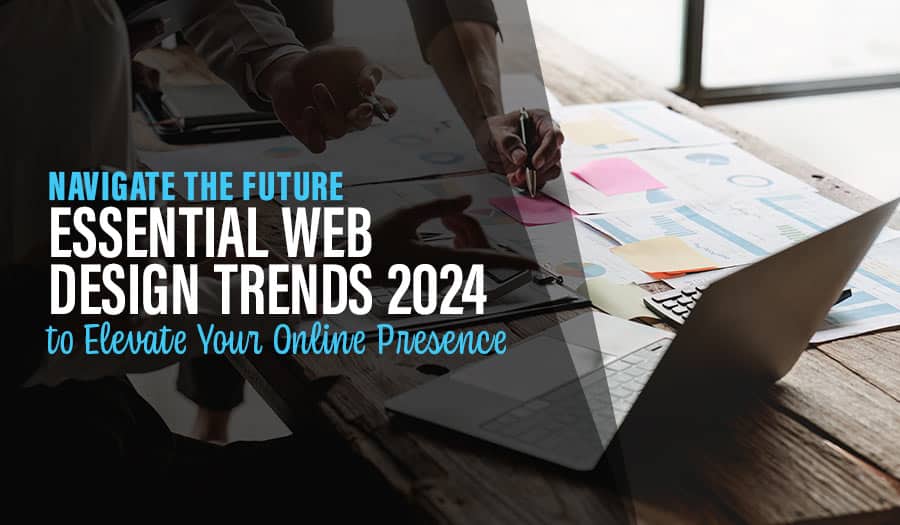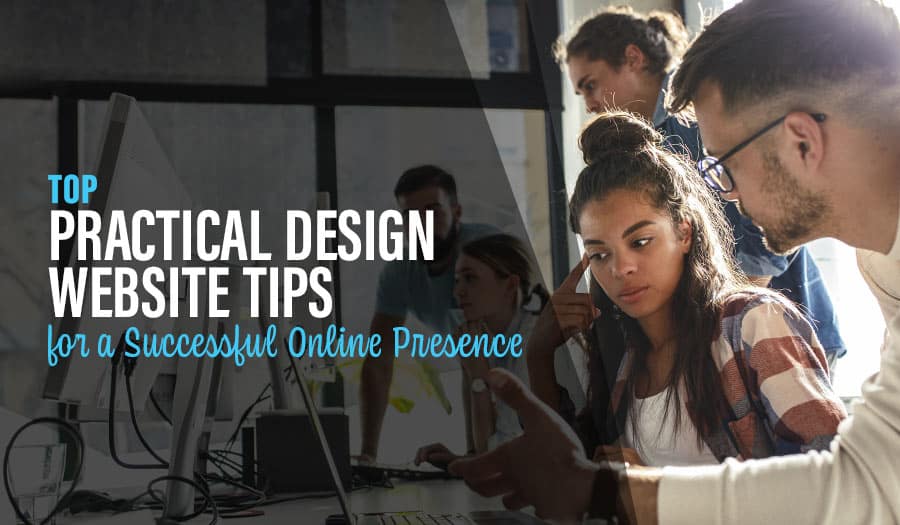First impressions are essential, and that’s just as true with websites as with people. If you want users to keep coming back to your website, then you need to give them both a functional as well as an engaging experience. Here are 10 Easy Ways You Can Improve your Website User Experience.
10 Ways You Can Improve Your Website User Experience
- Check Your Loading Times
- Track What Your Users Do
- Use Fewer, More Targeted Ads
- Use Images
- Make It Easy To Connect With Social Media
- A Navigable Menu
- Respond Quickly To Users
- Watch Your Metrics
- Use Interactive Content
- Be Mobile-Friendly
Even if you’re not a website-building guru, there are some simple ways to ensure your users have the best possible experience when they come to your site. These are brought to you courtesy of Inboundio, Digital Gov, and Hub Spot.
What is Website User Experience?
Website user experience is the overall feeling users get when visiting a website. This includes speed, design, navigation, and how easy it is to find what they’re looking for. A great user experience encourages visitors to stay longer on your site and come back more often. It also helps you build trust with them, which can lead to more conversions. The key to a great user experience is to design your website with users in mind.
10 Ways You Can Improve Your Website User Experience
1. Check Your Loading Times
Nothing is more frustrating than waiting for a website to load, particularly in a world where users expect instant access. If you have a lot of dense images, motion .gifs, or videos on your site, that can turn your hare into a tortoise. Visit your site, and if it isn’t loading quickly enough, get rid of some of the bigger drags on speed. Your users will thank you.
What is your website loading time?
A website loading time is the amount of time it takes for a page to fully display all elements. This includes images, videos, text, and other content. It’s important to keep your loading times as short as possible since longer load times can lead to decreased user engagement and conversions.
2. Track What Your Users Do
There are programs out there, like Crazy Egg, which view what your users do when they come to your site. These programs record, and tell you what happens so that you know which parts of your site are the most popular. If 80 per cent of your traffic is showing up to watch your videos, then it’s important to make sure that page is regularly updated and user-friendly.
What platforms can you use to track users on your website?
You can use a number of different tools like Google Analytics, Hotjar, or Mixpanel to track user behavior and view the data. This will help you identify what your users are doing on your website and where they’re coming from. Knowing this information can help you optimize your website for better performance.
3. Use Fewer, More Targeted Ads
Nothing is more irritating than having to close two pop-up windows and find that loud audio commercial before being able to read an article. If you’re going to host ads on your website (which you may need to do in order to maintain site earnings), then you will be better off using fewer, more targeted ads. Create a balance so your site isn’t cluttered and it will run faster, while being more appealing.
Which is the best platform to run targeted online adverts?
One of the best platforms for running targeted online adverts is Google Adwords. With Adwords, you can create customized and comprehensive campaigns that target specific keywords and demographics so that you can reach the right audience with your messages. Additionally, it offers powerful analytics tools to help you track the performance of your ads, measure ROI, adjust bids
4. Use Images
A picture is worth a thousand words, and images and video will always attract eyeballs to the page. While this doesn’t mean you should neglect text, it does mean that you might want to include topical images to go with any events you’re reporting on.
Where can you find great stock images for your website?
Platforms like Getty Images and iStock have a wide selection of high-quality, royalty-free images that can help you create engaging visual content. Plus, all their images are optimized for the web and come with flexible pricing plans so you won’t break the bank.
5. Make It Easy To Connect With Social Media
If a user is on your website and wants to tell his or her friends about your page, it’s a lot easier to push one button instead of copying a link, pasting it, writing a blurb, and sharing it. If you connect your site to popular social media networks, users will notice and reward you for that effort.
What are the most popular Social Media Platforms to connect to your website?
The most popular social media platforms to connect with your website are Facebook, Twitter, Instagram, Snapchat, YouTube and Pinterest. Creating these accounts for your company or brand will allow users to easily share your content quickly and efficiently. It’s important to customize the profile pictures and captions of each account so that it promotes the look and feel of your overall brand. Additionally, you should also regularly post content or updates on each platform to keep your followers engaged and interested in your website.
By connecting these social media platforms to your website, you can gain more exposure and reach a wider audience. You will be able to increase your traffic by sharing relevant stories, images, videos and other content.
6. A Navigable Menu
A website exists to engage traffic, and provide information. An easy way to make sure you’re giving as many visitors what they want as possible is to break that information up into different pages, which are linked on an easy-to-navigate menu. If you have a physical address, then a “Directions” page is a quick way to funnel those users to what they want. Same for a “Frequently Asked Questions” or a “Contact Us” page.
7. Respond Quickly To Users
Users who email, or leave comments on social media, are providing you with feedback. Let those users know you’ve seen their comments by responding, and then make changes to fit what users want. This will create a relationship and help you alter your site to provide a more enjoyable experience.
8. Watch Your Metrics
Every website these days has some metrics program attached to it. These programs, like Google Analytics will watch your pages and give you numbers you can use to track your progress. They’ll tell you where your traffic is coming from and help you understand which additions to your page are being viewed the most, how long people browse, and even your bounce-back rate.
9. Use Interactive Content
Even something as simple as being able to vote up or down on something will engage viewers more than a simple reading. Never be afraid to add a new way for viewers to interact and give their opinion about something they’re seeing.
What are some examples of interactive content on websites?
Examples of interactive content include polls, surveys, quizzes, calculators, and interactive videos. These types of content are great for engaging users and helping drive user engagement with your website. They also provide valuable data that can be used to improve user experience and inform future marketing decisions. Additionally, they provide a way to capture leads and generate more conversions
10. Be Mobile-Friendly
As more people use smartphones and other mobile devices as their primary method of web browsing, websites that correctly display on those devices are going to engender more loyalty. That’s an effortless way to win points with users who may first encounter you on a coffee break but will never return if they don’t get a good first impression on their phones. Some tips for how to do this can be found right here!
Did you know Google penalises websites that are not mobile-friendly?
Make sure your site is mobile-friendly to ensure it ranks well in Google search results.
Pixelfish can help you make sure your website looks great on all devices and Google rewards you for it. We can also design customised mobile pages that provide a unique and tailored experience for users. Let us take the guesswork out of making sure your website is optimised for mobiles!
Key KPI’s to measure ongoing Website User Experience
- The number of visitors – Measuring the number of unique visitors to your website is an excellent way to gauge how well it is doing. This can give you insight into how effective your marketing campaigns are, and how successful your website design and content is in attracting user attention.
- Time on site – How long are users spending on your website? User engagement can be measured by the time people spend on a website before they leave. A longer stay often indicates more interest in the content and, therefore higher user satisfaction.
- Bounce rate – The bounce rate is the percentage of visitors who navigate away from your site after viewing just one page. It’s essential to keep an eye on this metric because it can indicate
- The number of pages viewed per visit – The number of pages viewed during each visit can be a good indicator of user engagement. If people are viewing multiple pages on your website, it is likely that they have found what they’re looking for and are interested in exploring further.
- Comments or shares – Comments, likes, and shares on your content often show users’ interest in what you posted. If people are commenting or sharing your content, the content likely resonates with them and they want to share their thoughts or experiences with others.
- Return visits – return visits can be a great indicator of user engagement. It could mean that users have found something on your website that they liked and plan to visit again.
- Conversion rate – the rate at which users complete a designated action, such as signing up for an email list or making a purchase. If your conversion rate is high, users are taking action on your website and buying into what you’re offering.
With user engagement being a key metric to measure the success of your website, it’s essential to understand what creates user engagement. Look at page visits, time spent on pages and bounce rates. All of these can help you get an indication of how your users are engaging with your website and give you insight into what people find interesting or valuable on your site.
Remember, create content that resonates with your audience – create content that is tailored to the interests and needs of your target market. This can be done through surveys, analyzing user comments and feedback, and understanding the trends in your industry.
By creating content that resonates with your users and is engaging, you can increase conversion rate, boost sales and ultimately maximize ROI for your business. With a comprehensive strategy to measure user engagement, you’ll have all the necessary tools to keep visitors coming back for more.
Warning signs of poor Website UX
This can include users leaving the website quickly, low conversion rates, or a high bounce rate. To ensure your website is best set up for success, conduct user tests or surveys to identify and address issues with navigation, content structure, readability, and other UX components. Remember to prioritize user experience when creating web content – it’s one of the essential pieces for any successful website!
By utilizing the latest trends and best practices, you can ensure your content is optimized to reach its full potential. From designing an organized layout with clear calls to action to optimizing search engine rankings through SEO-friendly content, there are lots of ways to keep users engaged. With user experience at the heart of your website, you’ll be able to capture visitors’ attention with relevant and engaging content that resonates with your target audience.
Finally, don’t forget to focus on customer feedback. After all, they’re the ones who know what they want and need from a website – so it’s essential to listen and learn from their comments to improve your content and provide them with the best possible experience. With a little effort, you can create content that’s sure to please – and stand out from the crowd.
Thanks for reading! We hope this article has helped give you an overview of all the factors in creating great website content!
Take your business to the next level with a Pixel Fish Website.
Check out some of our latest Website Design projects.
More Reading
WordPress for Small Business: A perfect match
Top 10 reasons to choose WooCommerce for your business
What are The Best Social Media Platforms for Ecommerce
Best Practices for Optimizing Your WordPress Website Performance
Tips for Making Your WordPress Site Secure
Why Your Business Needs Mobile Responsive Wordpress Website Design



